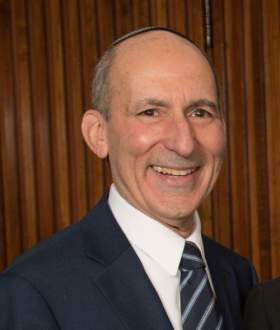The Present Moment, Math and March of the Living
Days before the indescribable, deadly attacks on Israeli civilians, BJE opened registration for the 2024 March of the Living program. This international program, initiated in 1988, brings groups from scores of cities and countries across the globe to commemorate and reflect upon two unforgettable events in the history of the Jewish people: the Holocaust, and the establishment of the State of Israel. Participants spend a week in Poland, gathering, collectively, in Auschwitz for a “march of the living,” and memorializing, on Yom HaShoah, those who were murdered. Program participants proceed to Israel, where they share in ceremonies surrounding Yom HaZikaron (Israel’s Memorial Day) and Yom HaAtazmaut. BJE-Los Angeles has participated in the program, organizing and leading groups of L.A. teens and, sometimes, adults, since the early 1990s.
I personally participated in March of the Living for the first time in 1996. Our group of teens was wonderfully diverse. There were students from Reform, Conservative, and Orthodox congregations, and students with no Jewish educational background; there were students from public schools and students from private schools (including a yeshiva high school); the students lived in different parts of greater Los Angeles. It struck me that there was nothing more appropriate than experiencing this journey with such an eclectic group of Jews. Both the Holocaust and the establishment of the modern State of Israel were shared experiences of Jews of all backgrounds; these events underscored the shared history and destiny of klal yisrael, the Jewish people.
There are many elements of that trip that remain with me, years later. Two, in particular, stand out in the context of the present moment, a time in which Jews of varying backgrounds, outlooks, and dispositions are drawn to a shared sense of identity and mutual responsibility. The public gatherings, fundraising in support of Israel, and rapt attention to news of Israel, among American Jews, is, perhaps, greater than at any time in the past 50 years.
Among the teens who participated in BJE’s 1996 March of the Living group was a young man whose father was, at the time, the rabbi of a Reform temple in the valley. The young man’s mother was the pre-school director of a large early childhood center at an Orthodox yeshiva day school. This thoughtful teen explained to me that Judaism can be likened to mathematics. Algebra, he said, is mathematics; geometry is mathematics; calculus is mathematics. Each is an aspect of a larger conceptual whole. Similarly, he observed, Jews share common texts and a common history; various streams of Judaism emphasize and give expression to varying dimensions of the whole. We are one people. As Jews assembled soon after the events of Shabbat/Shemini Atzeret, Simchat Torah, whether at Stephen Wise Temple or Beth Jacob Congregation (at each of which settings large, communal gatherings were held, shortly after the holiday and the terrible events of the day in Israel), I could not but recall the comment of my young teacher.
A second “March” experience that comes to mind relates to a prayer that has been committed to song. The prayer is traditionally recited in the morning service on Mondays and Thursdays, after the Torah is read. Its words are: (As for) our brethren the entire House of Israel who (still) remain in distress and captivity, whether on sea or on land, may God have compassion on them, and bring them from distress to relief, from darkness, to light, from servitude to redemption, at this moment, speedily, very soon; and let us say Amen.
As we travelled, in 1996, to such places as the Warsaw Ghetto, Treblinka, Majdanek, and Auschwitz, there were no words that could adequately express what people were feeling. One of the teens, a student at a Jewish high school, taught the group the words and music of this prayer, and it became a way for the group to express solidarity with one another and with those in distress (among other “real time” matters of distress at the time, were bus bombings in Israel, that had recently taken scores of lives, and left many with serious injuries), as well as expressing hope. Any time that I hear those words sung, I think of the BJE-LA teens who experienced March of the Living 1996 together.
Music is very powerful; from an early age, children pick up songs they hear and sing them, even absent-mindedly. As I was deconstructing my sukkah early one evening last week, a six year old child – a student at a Jewish day school who lives directly behind me, and was in his family’s backyard – was singing, repeatedly: (As for) our brethren, the entire House of Israel who (still) remain in distress and captivity…. Clearly, this is a melody and words that he brought home from school. May the prayer of this child, expressing a hope that all of us share, be realized speedily, very soon,

